-
ABOUT US
-
ACADEMICS
Curriculum Program
Departments
- English
- High School Chinese
- Primary and Junior School Chinese.
- High School Mathematics
- Middle School Mathematics
- Primary School Mathematics
- Music and Fine Arts
- Physical Education
- Physics
- Chemistry
- History and Geography
- Physical Science and Optional courses Department
- Middle School Biology
- High School Biology
- Social Sciences
- Computer Science
- Courses in Primary School
Achievements and Matriculations
College Counseling
Science & Technology Innovation Contest
Subject Competition
-
ARTS
-
ATHLETICS
-
AT SHSID
SHSID ∣ TIMES
PTSA
Club Exhibition
- 龙吟社
- Live 2 Drama
- Choir
- Hip-pop Dance Club
- The Primary School Dance Troupe
- Symposiums Club
- Biology Workshop
- You Shan
- VEX Robotic
- Peking Opera Club
- Baseball Club
- Model United Nations
- The World Scholar’s Cup
- Future Problem Solving Club
- United States Academic Pentathlon
- OM Club
- AMC Club
- Music for Patients
- SHSID Gazette
- Smile Charity
- Cultural Moments
- SciAcademy
- Stem Doge Alliance
- Chinese Debate Club
- IAA
- Mock Trial Club
- Zhengming Club
- Furry Friends
- GT-Racing
- Village Radio
- IMMC Club
- Creative Design and Intelligent Fabrication
- Future City Research Project
- ECOCAP
- AdvocaSEA
- SPDC
- Medishine
- Floorball Club
- Animusic MTC
- Wings Up
- All Booked
Health and Wellness
Campus Safety
Cafeteria Service
-
ADMINISTRATION
-
ADMISSIONS
-
ALUMNI
Alumni Information
Honors Students
- Class of 2025
- Class of 2024
- Class of 2023
- Class of 2022
- Class of 2021
- Class of 2020
- Class of 2019
- Class of 2018
- Class of 2017
- Class of 2016
- Class of 2015
- Class of 2014
- Class of 2013
- Class of 2012
- Class of 2011
- Class of 2010
- Class of 2009
- Class of 2008
- Class of 2007
- Class of 2006
Who Studied at SHSID
SHS Foundation
-
DOCUMENTS
Puxi Campus G4-5: Spring Outing Study Tour
Spring is in full bloom, and everything is reviving. On April 25th, 2024, the 4th and 5th grade students of the Shanghai High School International Division embarked on a spring study tour.
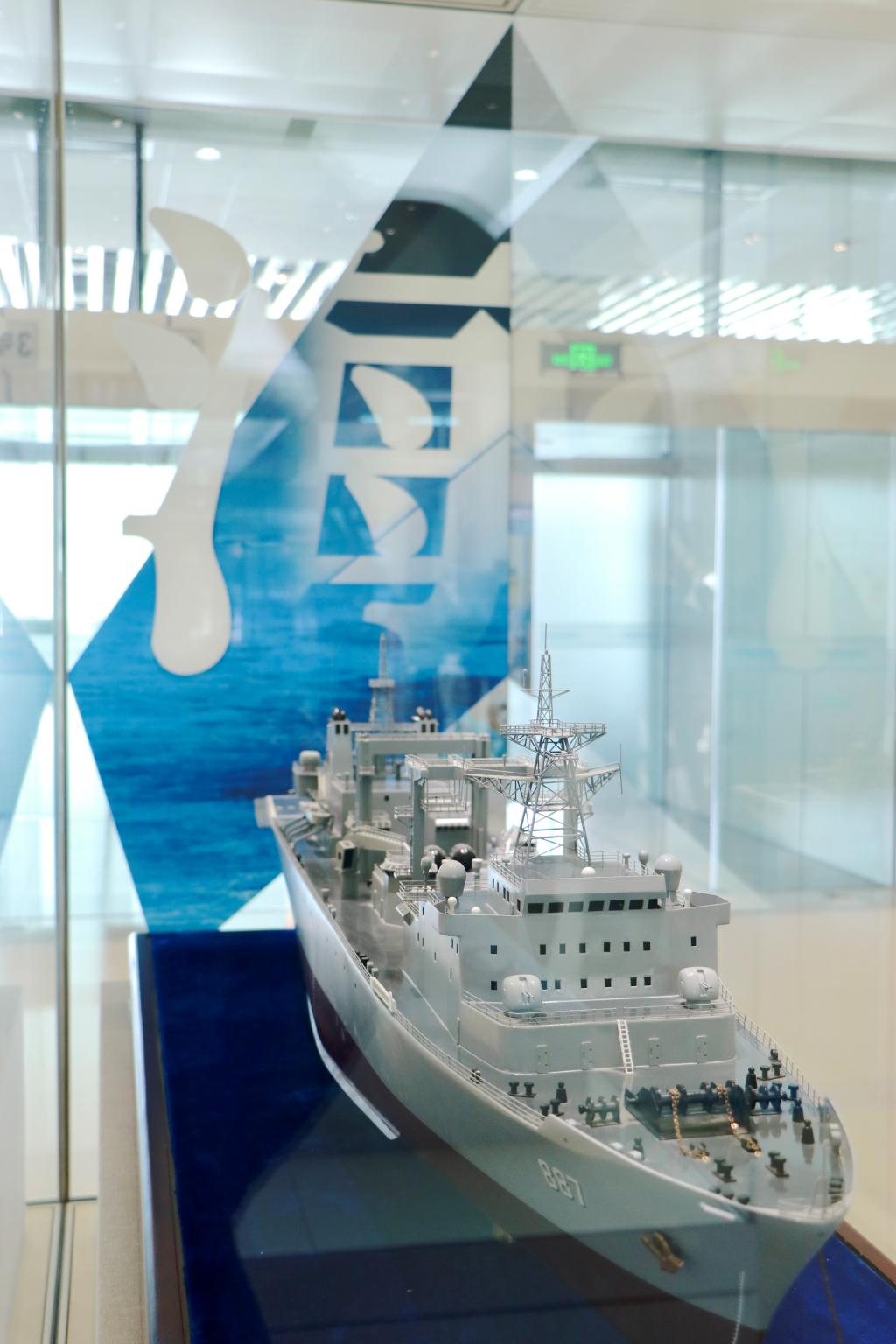
The 4th graders embarked on a unique maritime learning journey, as they set sail to the China Maritime Museum located by the Dishuihu Lake in Lingang.
As soon as they entered the exhibition hall, it felt as though they had traveled through time and space. A 1:1 replica of Zheng He's ship that sailed to the West immediately caught their eyes. The students flocked to the side of the ship, taking precious group photos, marveling at the grand ambition of Zheng He who led a massive fleet to the West. They also peered through the glass to see the interior of the ship's cabin, imagining the daily life of the sailors back then.
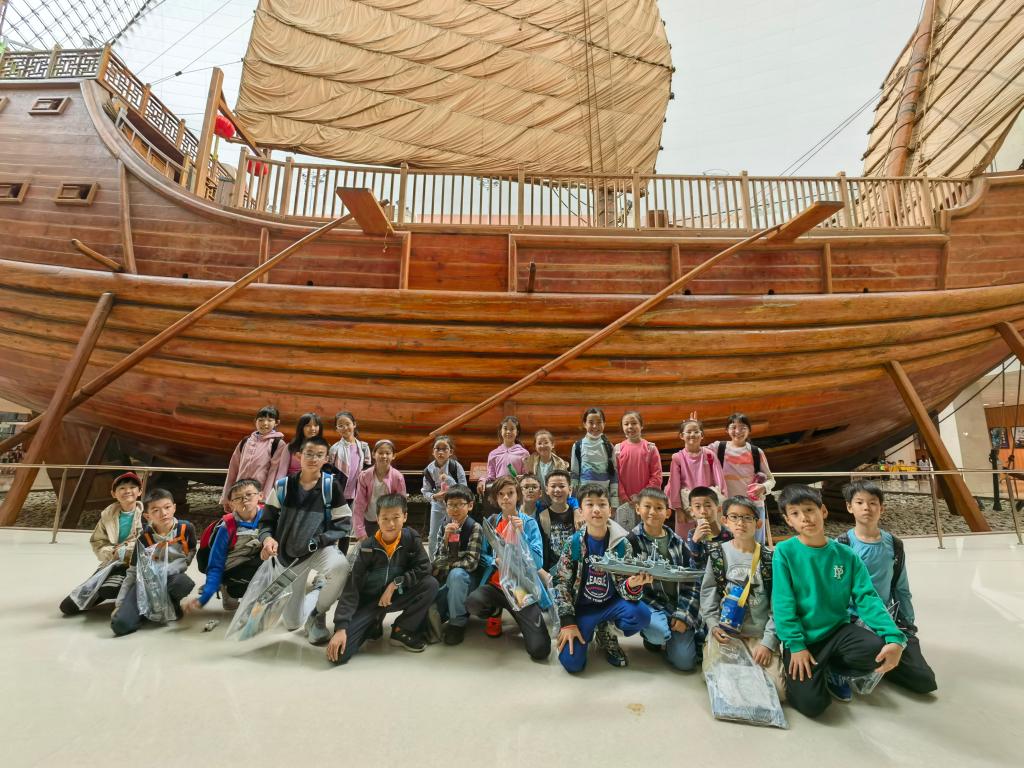
Afterwards, the students immersed themselves in the making of a model of the Lanzhou ship. The Lanzhou was the first ship in the Chinese navy equipped with a phased array radar and long-range air defense missiles, leading the new trend in future maritime defense, and marking an important step forward in the regional air defense capabilities of the Chinese navy. Through this interactive experience, the students learned about the complex technology of modern ships and gained a better understanding of Chinese naval engineering.
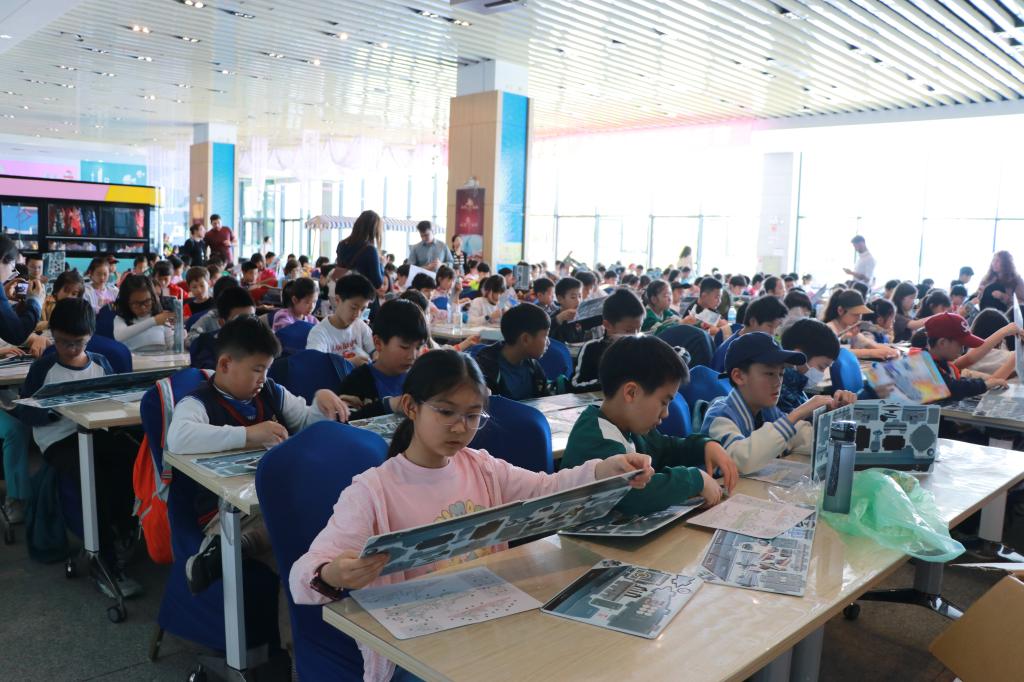
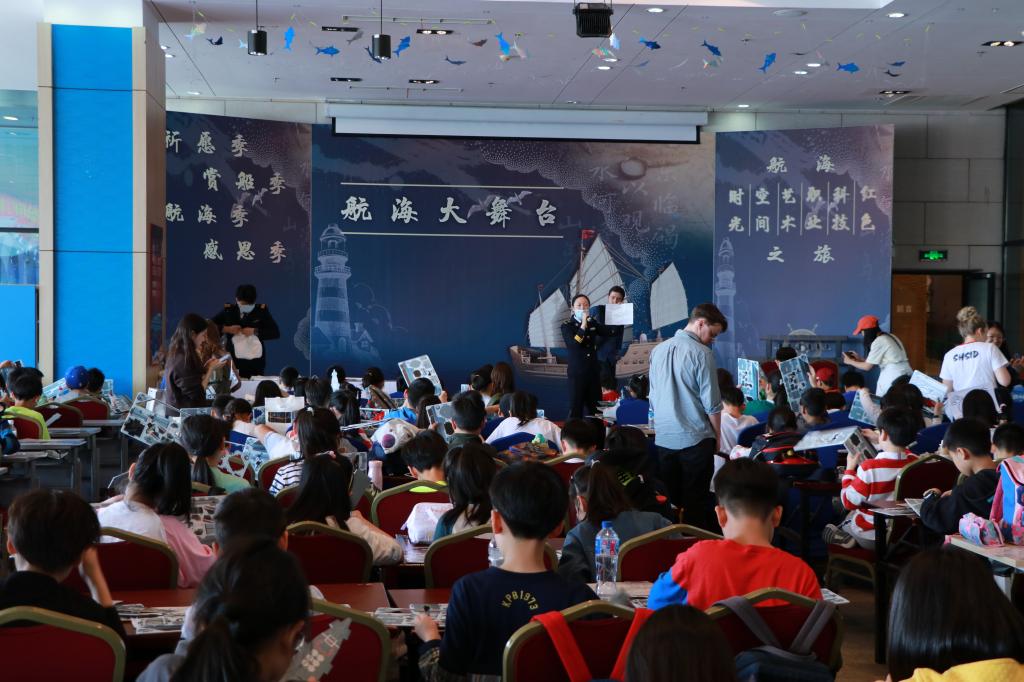
In the Maritime History Museum, the guide led the students along the corridors of history, delving into the origins and evolution of maritime exploration. From ancient rafts and dugout canoes to modern compasses, telescopes, and sea charts, the students navigated through a large number of physical exhibits that fully appreciated the brilliant glory of maritime civilization. The students also had the opportunity to admire the Mao Kun Map up close, which is currently known as the largest, oldest, and best-preserved colored world map drawn by Chinese people. It is also the earliest known world map depicting Africa. The students marveled, fascinated that we had already reached Africa as early as the Ming Dynasty!
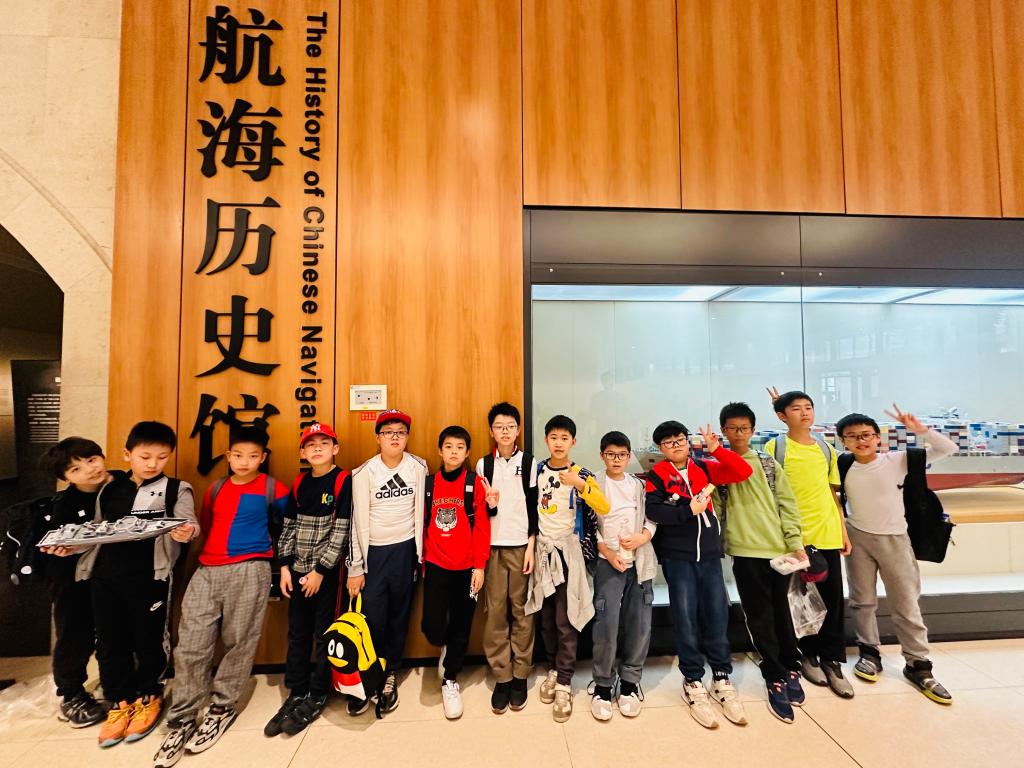

In the Ship Pavilion, there was a highly popular interactive exhibit - virtual welding. The 4th graders enthusiastically took on the role of ship welding engineers, immersing themselves in the mysteries and challenges of shipbuilding technology. Additionally, the pavilion featured an interactive simulation of a ship's navigation bridge, allowing the students to feel as though they were on a ship sailing along the Huangpu River.
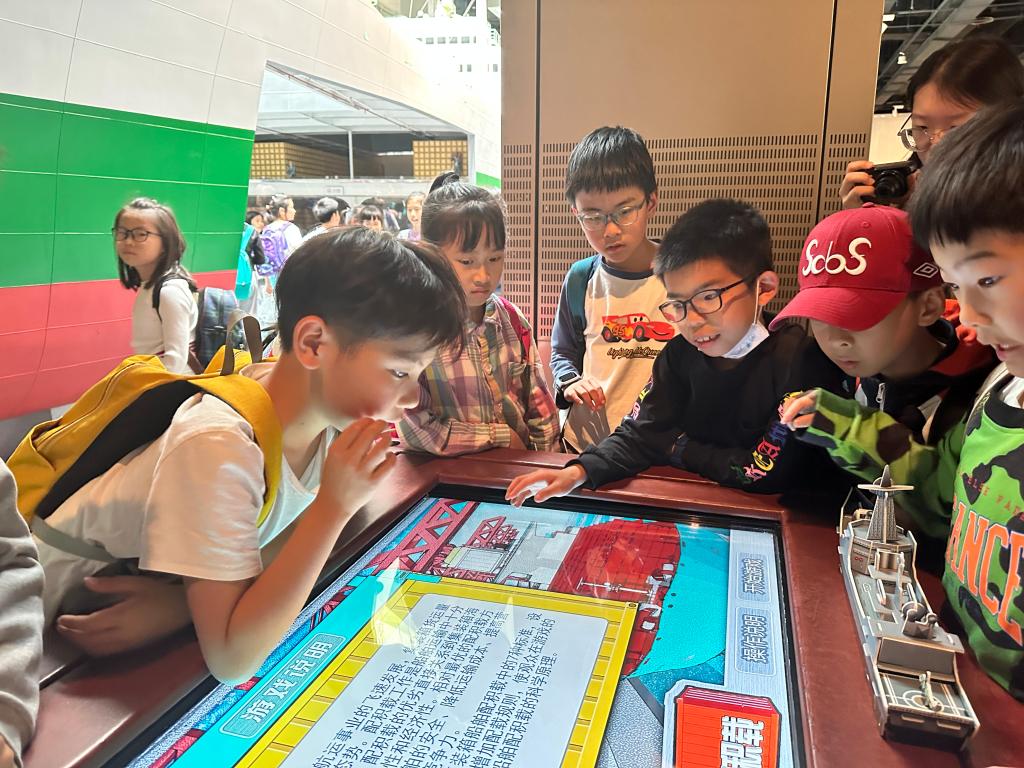
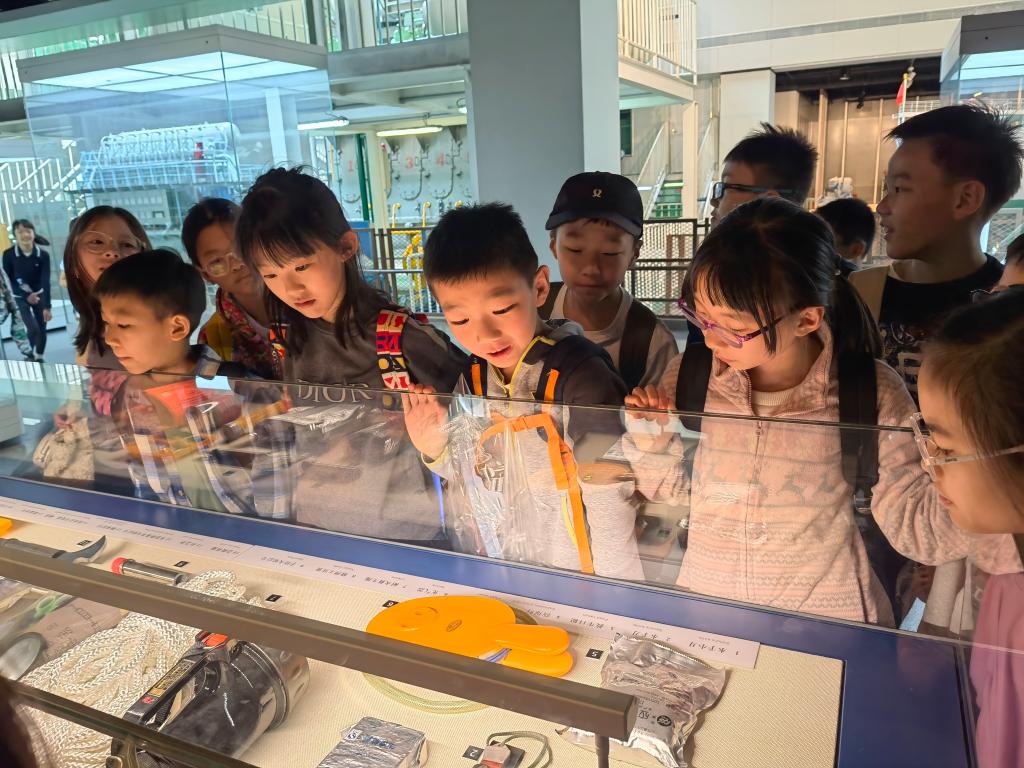
In the Ocean Zone, there were around 100 species of precious marine animal specimens such as Arctic wolves, emperor penguins, hawksbill turtles, conches, Antarctic krill. There were also a myriad of exhibits with compelling stories such as seawater from the four major oceans and seas of the world and China, Antarctic rocks, the flag of China's 12th Arctic scientific expedition, and a model of the "Xuelong 2" ship. The students learned about oceans from through the lens of marine geography, marine biology, ocean development, and ocean conservation, establishing connections with the knowledge they had acquired in their geography and science classes.
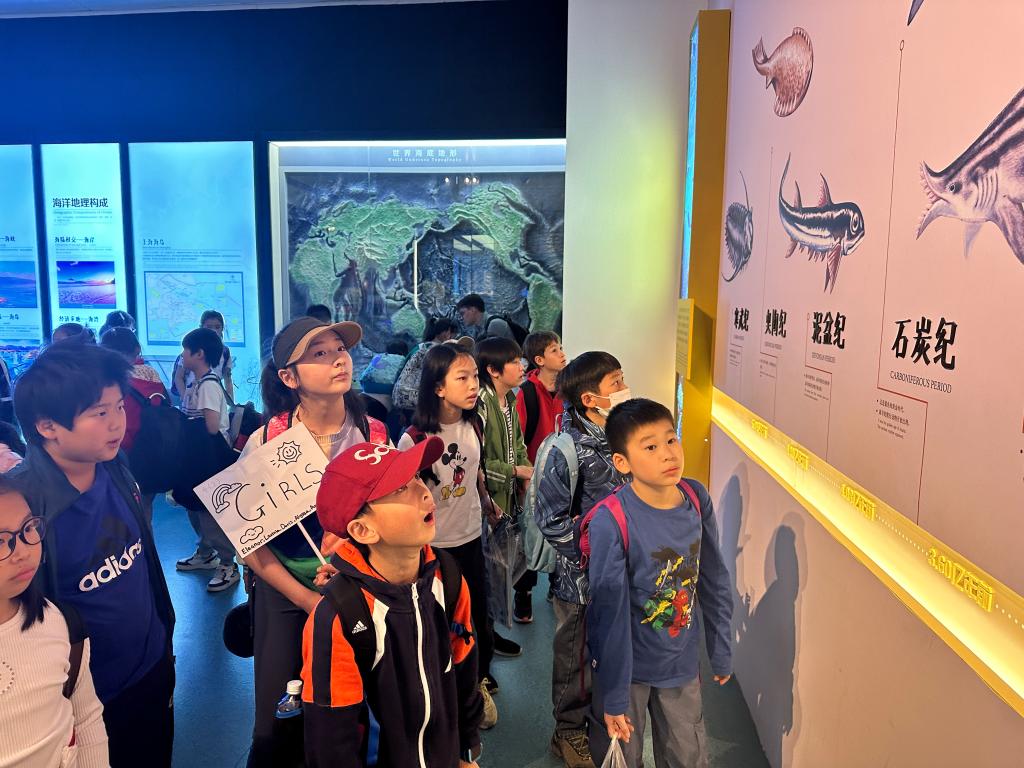
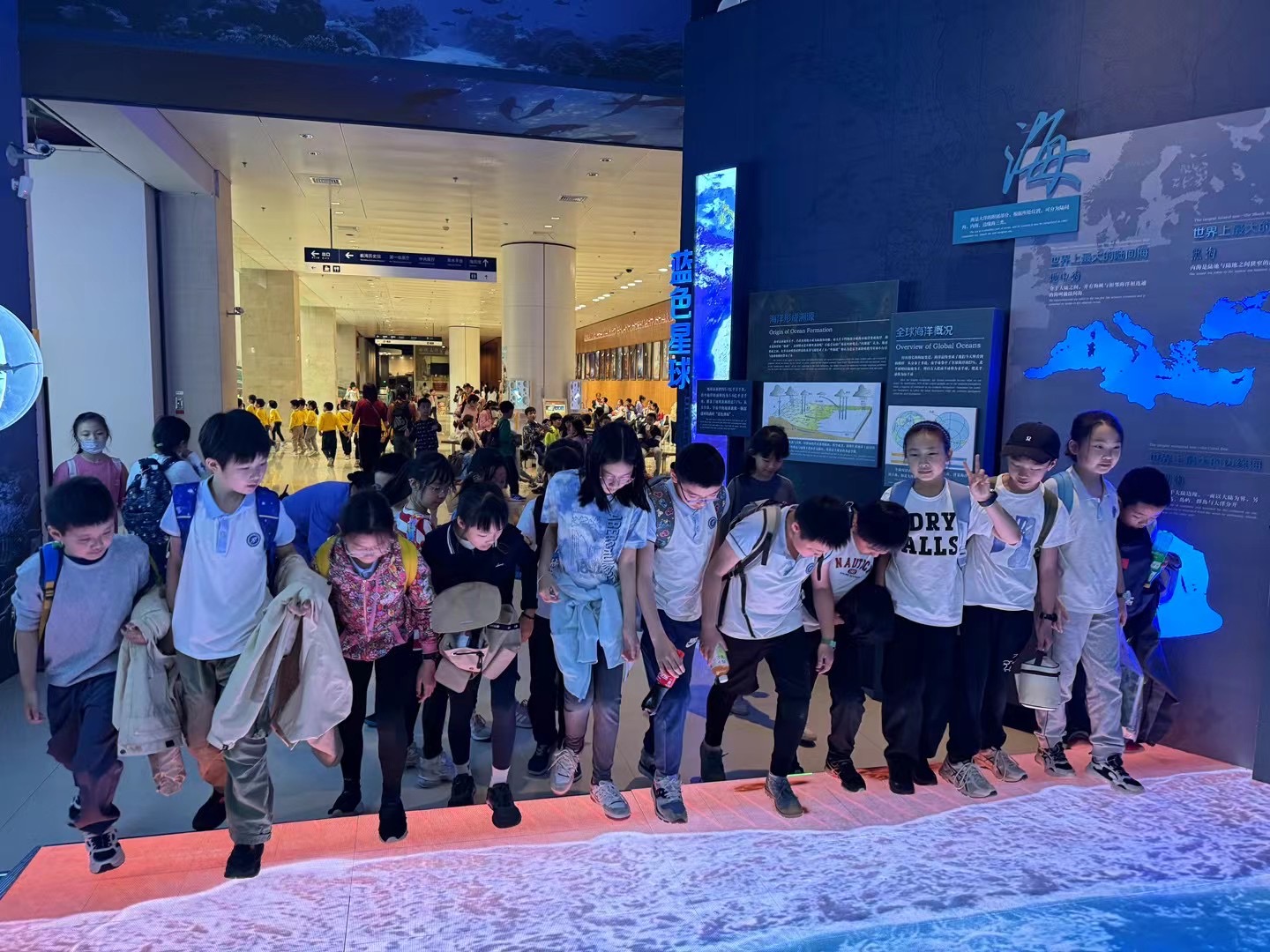
After the fascinating tour, the students discussed the current development and trends in the maritime industry, participated in a maritime quiz challenge, and took home exquisite small prizes.
This trip to the Maritime Museum not only provided the students with rich maritime knowledge but also helped them understand China's glorious maritime history and appreciate the great potential for future development in China's maritime affairs. Cherishing the time, devoting themselves to maritime endeavors, let us join hands and pursue our dreams on the ship's rail, sailing toward an even broader future!
G5
The 5th graders' spring study tour was closely tied to the theme of "Maritime Luminaries, Shanghai's Prosperous Culture" that they had previously explored during Chinese Culture Week. The students had already learned about the outstanding achievements and immense contributions of the two sages, Xu Guangqi and Huang Daopo, in class. On Thursday, they visited Xu Guangqi Park and Huang Daopo Memorial Park to gain more knowledge and insights through hands-on experiences.
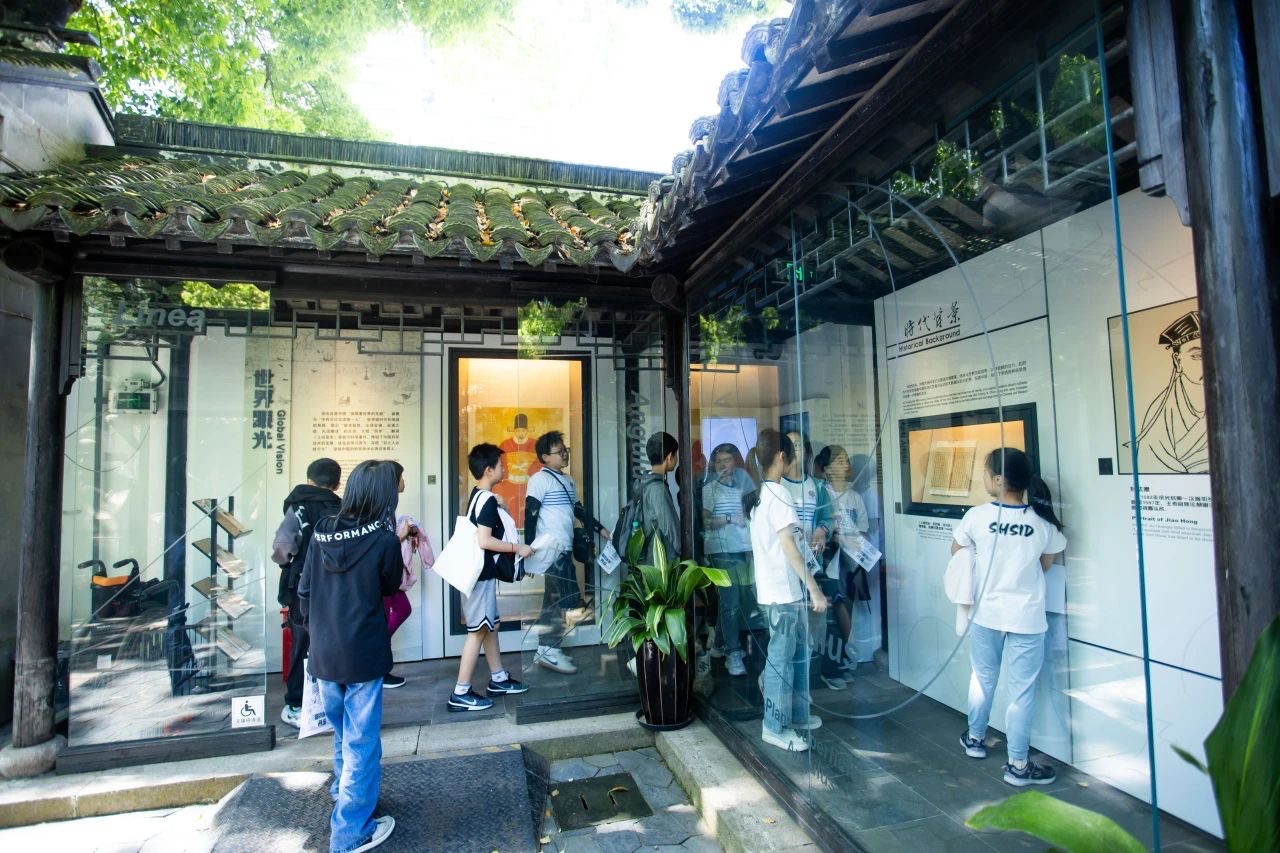
Early in the morning, the 5th graders split into two groups. Classes 5(1) to 5(4) went to the serene Xu Guangqi Park for their study activities. Holding the challenge papers, the students navigated through the park, embarking on an explorative journey. In the Xu Guangqi Memorial Hall, which features Ming Dynasty architectural style, the students saw many precious museum collections, including Xu Guangqi’s handwritten manuscripts, literary works, and more. They gained a deeper understanding of this scientific pioneer’s life and achievements from four perspectives: global vision, scientific spirit, patriotism, and noble character. Some students even attempted to translate Xu Guangqi’s “Geometric Principles” from the classical Chinese version to modern Chinese, in an attempt at solving these 400-year-old math problems. Leaving the memorial hall, the students paused at various monuments and sculptures in the park, reading, recording, and reflecting on this great man's immense contributions to promoting cultural exchanges between China and the West and introducing Western scientific knowledge. Bidding farewell to the fast-paced life, the students slowed their pace in this tranquil corner, enjoying the winding paths and fish playing in the lotus ponds, engaging with history and inheriting the great spirit and cultural heritage of their predecessors.
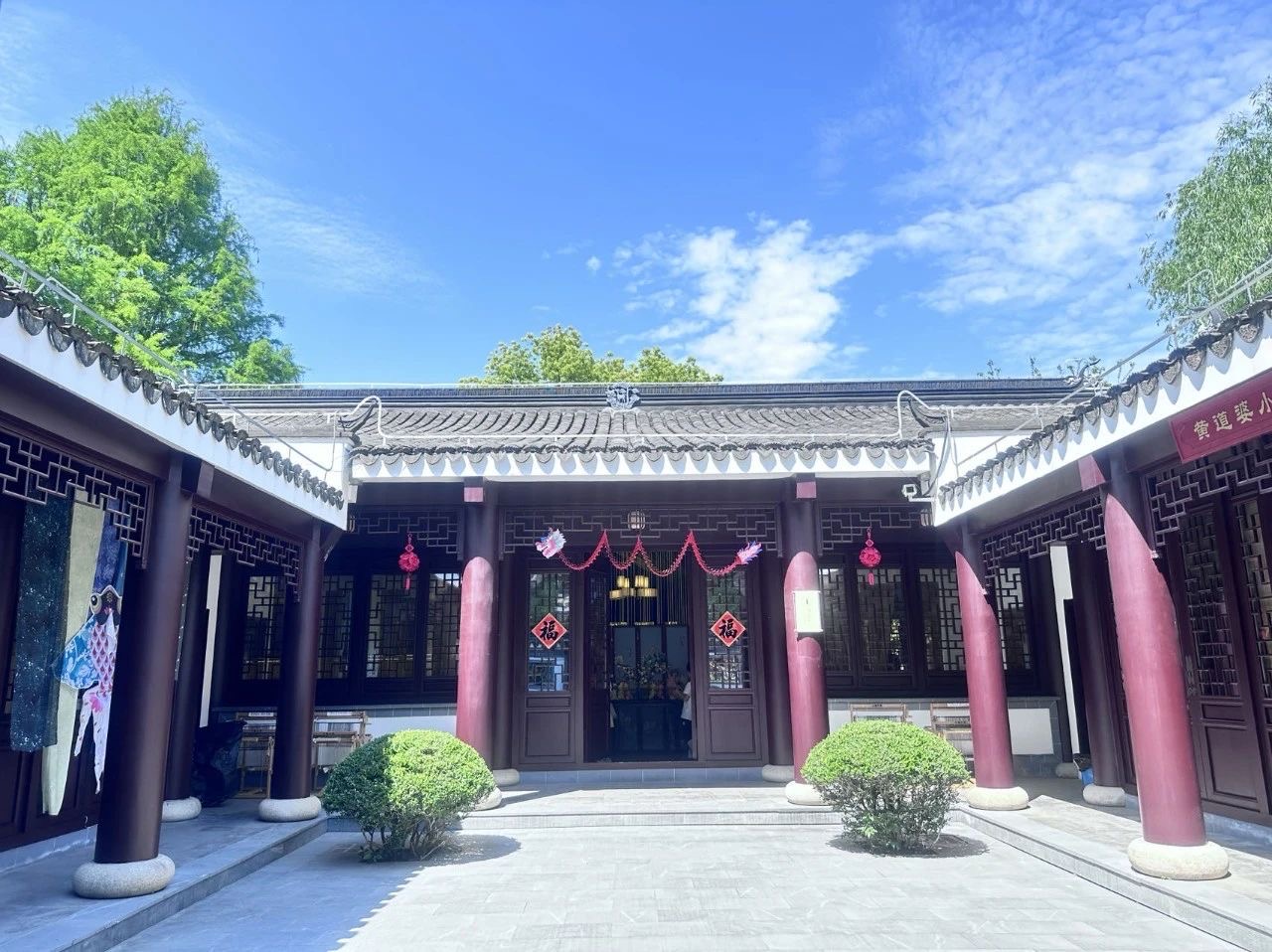
Classes 5(5) to 5(8) visited the serene Huang Daopo Memorial Park. In the courtyard exuding the charm of Jiangnan, the students paid their respects at Huang Daopo's tomb and observed the precious and rich collection of traditional textile tools and various textile products up close, gaining a more direct understanding of Huang Daopo's innovations and transformations in textile tools and techniques such as rolling, spinning, and weaving. Additionally, the students had the privilege of inviting Lin Xiumei, a district-level inheritor of the national intangible cultural heritage "Wuni Handicraft Cotton Textile Techniques," to demonstrate the operation and use of traditional spinning wheels and weaving machines on-site. The students marveled at Lin's skilled technique and the exquisite textile tools, while also being amazed by the diligence and wisdom of ancient Chinese laborers. Not only did the students see Huang Daopo's invention, the three-spindle spinning wheel, but they also experienced the "spinning" process on multimedia screens. After leaving, the students were deeply moved and left messages on the "Pioneers' Message Board," praising Huang Daopo's outstanding contribution of "clothing the world."
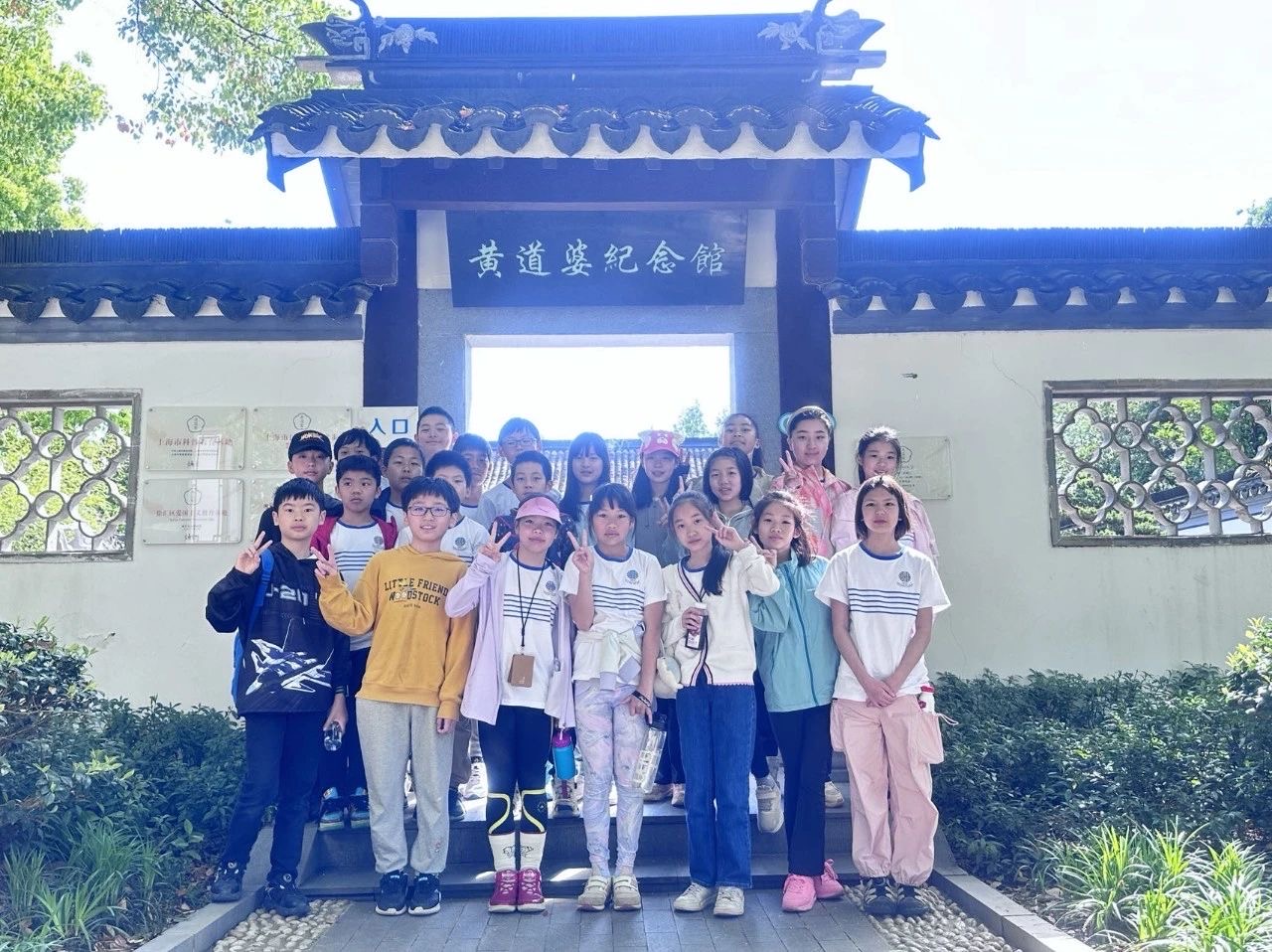
In the afternoon, the 5th graders went to the Cloud Aquarium and participated in a series of lively and interesting science popularization activities. After dining, the 5th graders watched the sea lion science show together, with the endearing and intelligent performances by the sea lions winning rounds of cheers and applause. Afterward, the students followed the guides to various exhibition halls for interactive tours. In the Jellyfish Theater, multimedia light and shadow technology combined with the diverse forms of jellyfish, offered the students a breathtaking visual feast. In the "Deep Sea Exploration" themed area, the students read carefully and observed attentively, learning about various deep-sea creatures and the history and discoveries of human deep-sea exploration. In addition to observing common animals like penguins up close, the students also discovered many peculiar-looking fish species, appreciating the wonders of nature's creation. Through a series of professional explanations and interactive experiences, the students explored the enchanting mysteries of nature while playing, broadening their understanding of the natural world and igniting their curiosity and desire for exploring the unknown.
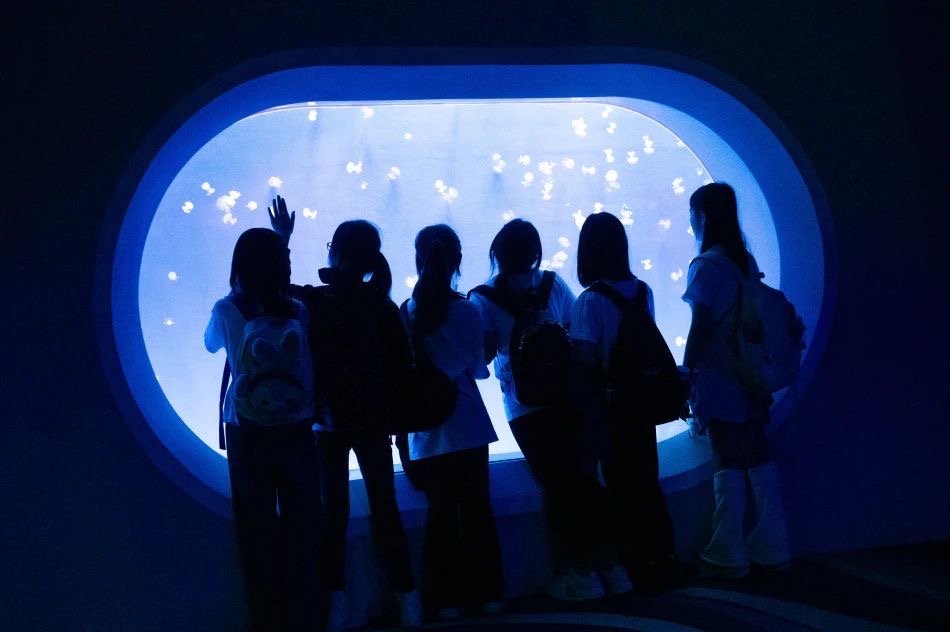
This spring outing allowed the students to gain knowledge and joy in a relaxed and enjoyable atmosphere. We believe that this outing will become a cherished memory for the students and spark their passion for knowledge and love for life.
Written by Zhu Yiwei, Wu Yin
Pictures by Teachers of G4-5, Minxuan Cao
Edited by Cong Luo, Bianca Noguera